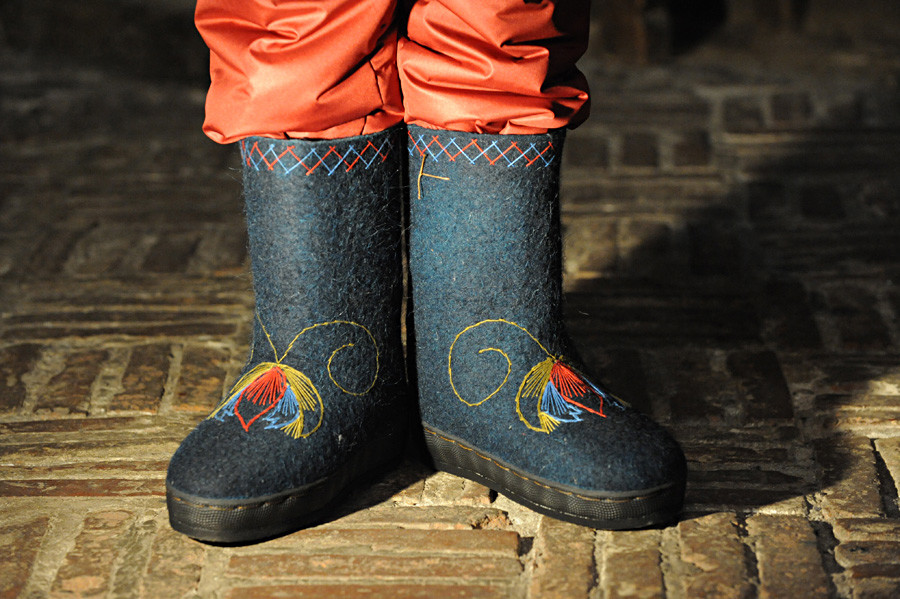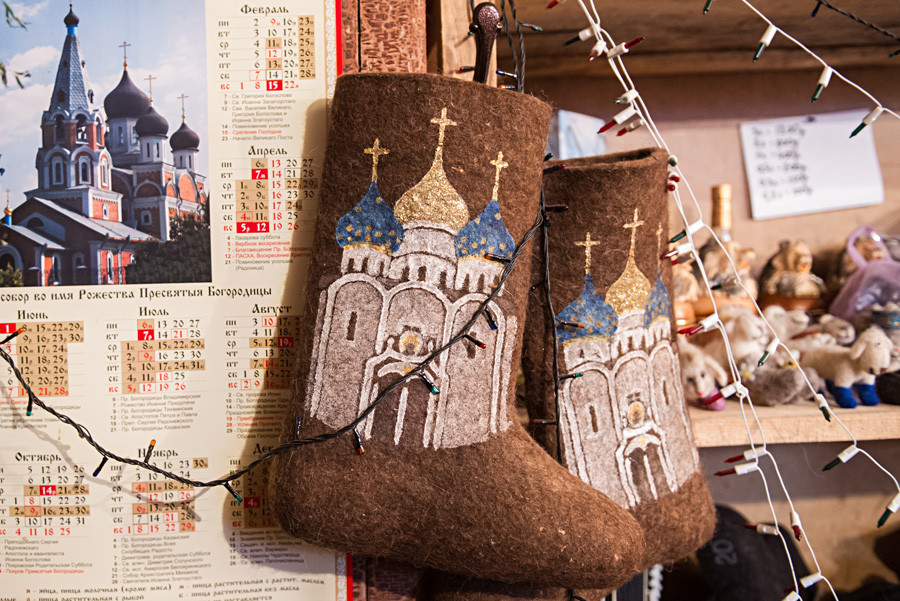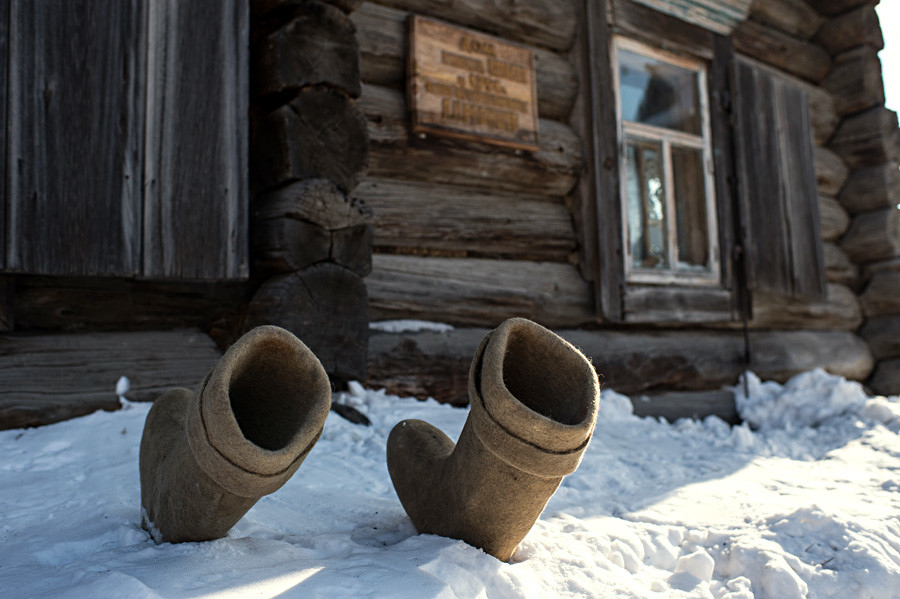
Russian valenki festival in the town of Navoloki
Vladimir Smirnov/TASSWhat could be simpler than Russian valenki? These traditional winter shoes have long been a symbol of Russia, just like the matryoshka or samovar. Today, warm boots made of wool are worn not only in villages but also in cities, and Russian designers offer new models with embroidery and decoration. But did you know that valenki can be used as a remedy against the common cold? Here are 10 interesting facts!
Historians believe that felt was invented by ancient nomads who used it for covering their Yurts and making hats. Felting wool came to Russia at the time of the Golden Horde (13th-14th centuries). In winter, they wore felt boots called
Until the 18th century, valenki

Museums' employees sometimes wear valenki as a part of their winter uniform
Sergey Pyatakov/SputnikThere’s no difference between the left and right valenki. They gain form when worn, taking the shape of their owner’s foot.
In Russia, valenki size is usually specified in centimeters, but add an extra 2-3 cm to your size because the wool will shrink. Valenki can be worn for 10 years or more, depending on the amount of use.
Natural sheep wool can absorb and evaporate moisture, keeping you dry. Thus, wearing valenki helps you cope with colds. The wool also contains lanolin, which effectively relieves muscle and rheumatic pain, and helps to heal wounds. In olden days, senior citizens living in villages didn’t take their valenki off even in summer because it was thought they improve blood circulation.

Valenki in Ivan Lapin's felt footwear workshop, Pimokatny Dvor, in Nizhnyaya Yeltsovka, Novosibirsk
Kirill Kukhmar/TASSAt the opening ceremony of the 2002 Winter Olympics in Salt Lake City, Team Russia made a memorable walk in valenki with galoshes.
By the way, valenki
And of course, you cannot imagine Father Frost and the Snow Maiden in any other boots!
Valenki throwing championships are regularly held in Russia's northern regions: Arkhangelsk, Syktyvkar and Severodvinsk. Russians compete in distance throwing, as well as for precision.
(Video in Russian)
The largest valenki in the Russian Book of Records, with a height of 168 cm and a foot length of 110 cm, were made in the city of Kineshma (Central Russia). The smallest valenki ever made also come from the same city, with a length of just 6 mm.
Museums dedicated to valenki can be found in Moscow, Kineshma
Russian winter shoes were widely used to predict the future. For example, during

Maslenitsa celebration at the Omsk State Historical and Cultural Museum-Reserve “Antiquity Siberian”
Alexey Malgavko/SputnikValenki
To complete the genuine Russian winter look try the ushanka hat. Also, share your feelings in the comment section below.
If using any of Russia Beyond's content, partly or in full, always provide an active hyperlink to the original material.
Subscribe
to our newsletter!
Get the week's best stories straight to your inbox